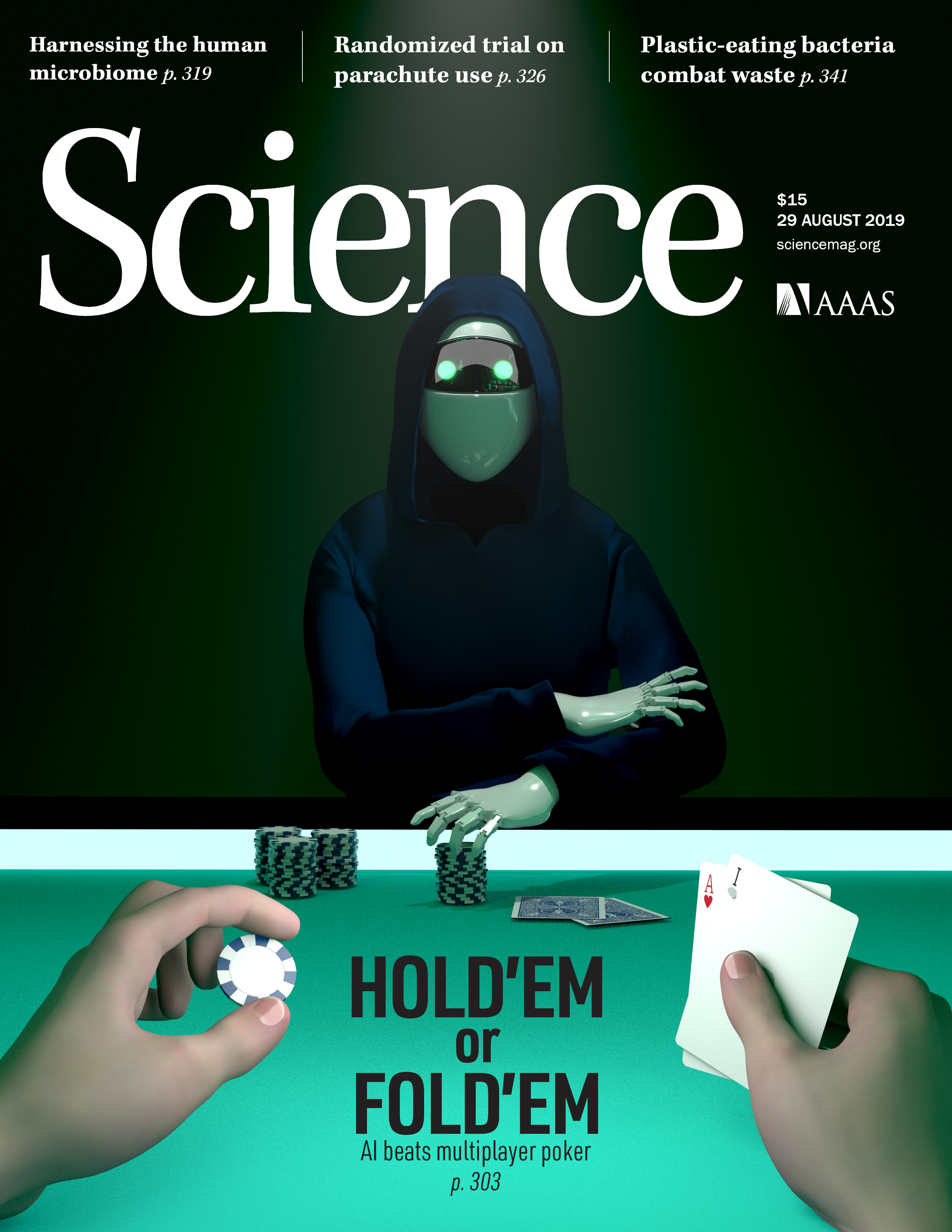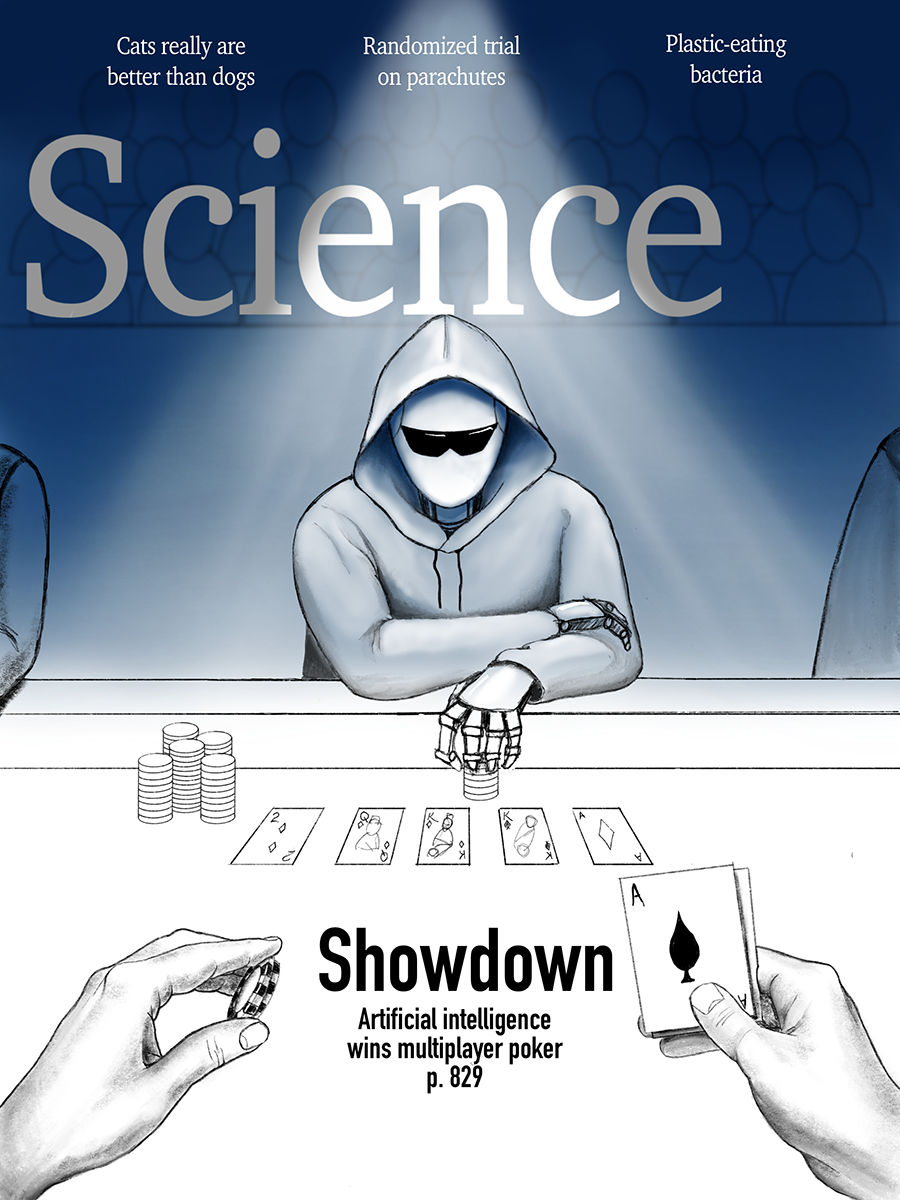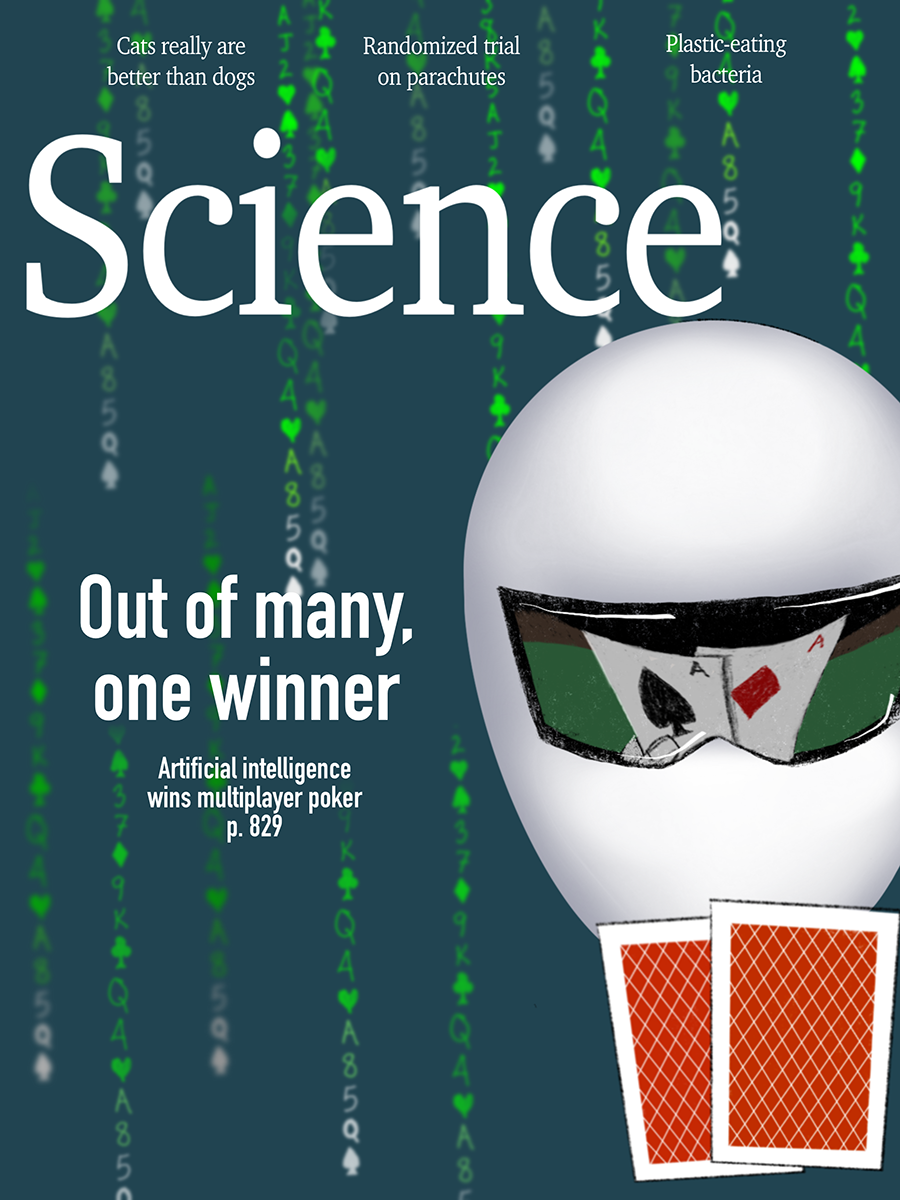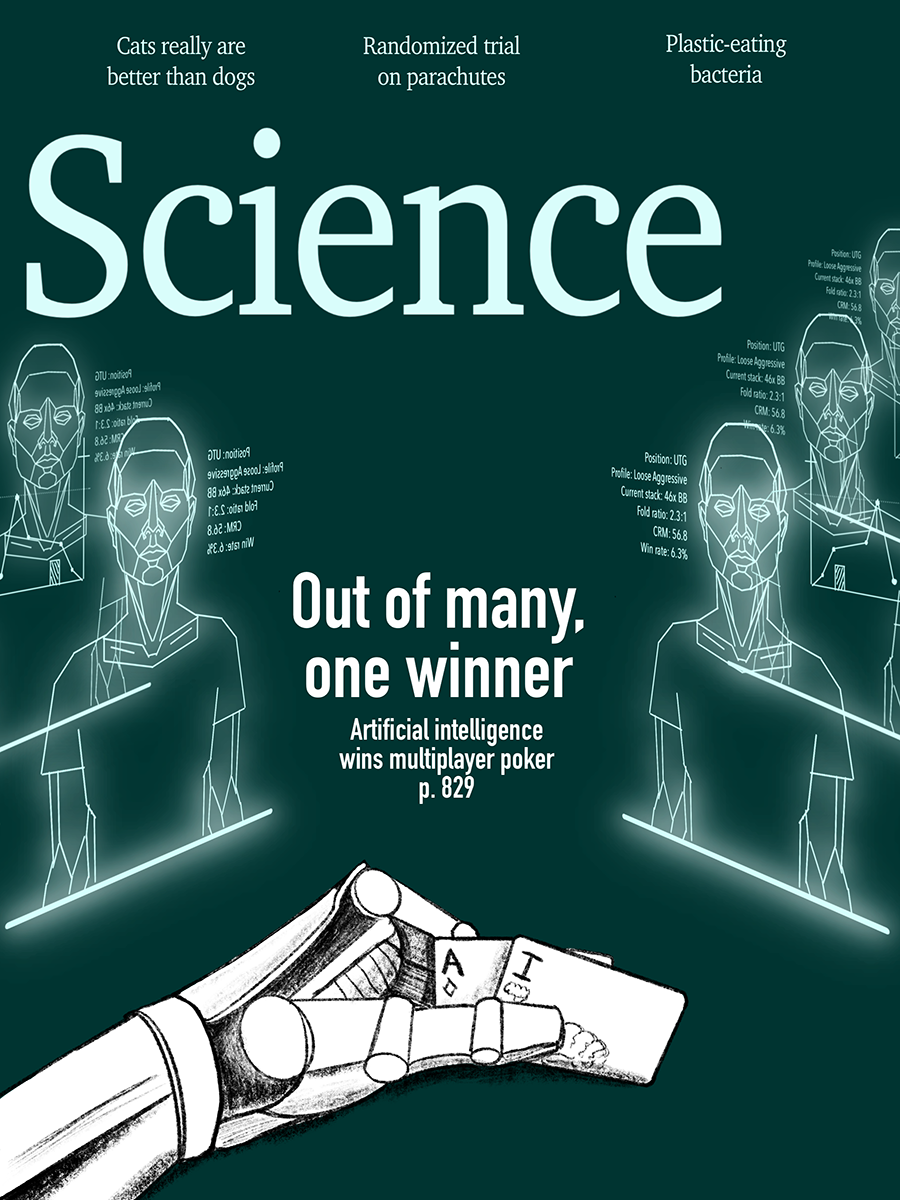Audience:
General scientific
Supervisor:
Prof. Marc Dryer
Date:
December 2019
Media:
Adobe Photoshop, Adobe Illustrator, Autodesk Maya, Pixologic ZBrush, Savage Interactive Procreate
Format:
Print
The authors of this paper1 describe the development and testing of Pluribus, an AI built upon a previous AI (Libratus) which beat professional players at two-player poker. Experimental evaluation showed Pluribus was able to successfully defeat elite professional poker players at six-player games (5 humans + Pluribus).
I designed this piece as a mock editorial cover based on this paper1 for a scientific journal based on a published paper. Initial concept sketches were rendered in Procreate. 3D modeling was performed in Maya with additional sculpting refinement and polypainting of the human hands in ZBrush. Titles were designed in Illustrator and final compositing done in Photoshop.
Concept sketches: non-blow-up
Final comprehensive sketch: blow-up
References:
1. Brown N and Sandholm T. Superhuman AI for multiplayer poker. Science, 2019; 365:885-890. PMID: 31296650





